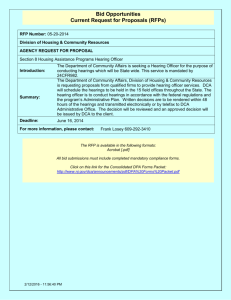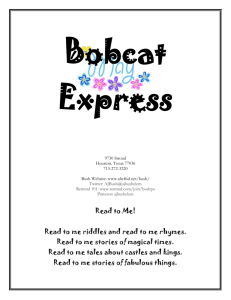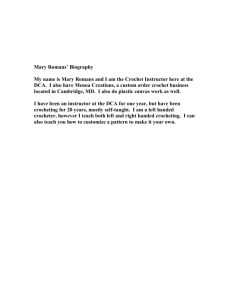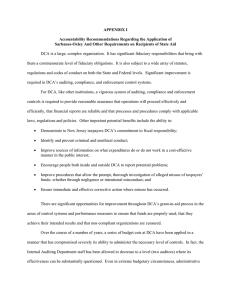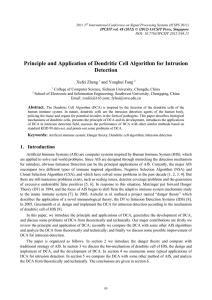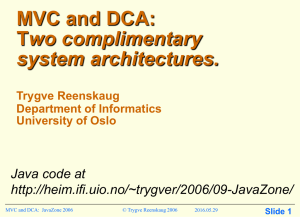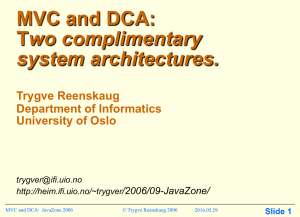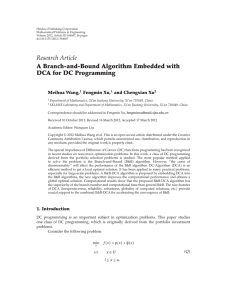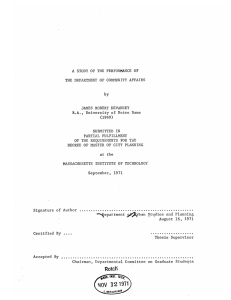PowerPoint Presentation - New Mexico Department of Information
advertisement
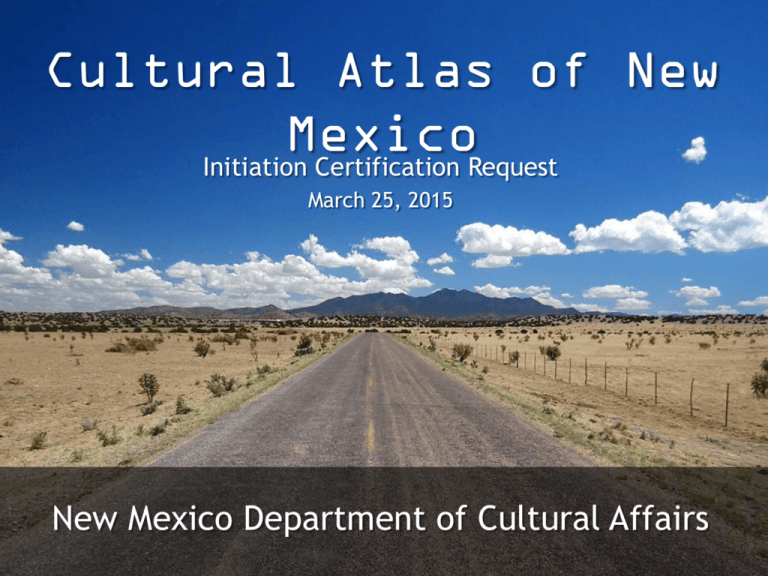
Cultural Atlas of New Mexico Initiation Certification Request March 25, 2015 New Mexico Department of Cultural Affairs Agency Vision The DCA Information Technology Vision is to support economic development by attracting visitors to the state; to provide educational opportunities and increase understanding of New Mexico; and to enrich the lives of all New Mexicans. Cultural Atlas of NM • • Key component of DCA’s digital strategy with multiple facets • Data Standardization • Digital Content Creation • Data Publishing/Data Access through creation of public Cultural Data API • Location-aware Mobile Application The intended outcome–and the alignment with DCA strategic goals–is increased awareness of and appreciation for New Mexico's cultural resources. Business Objectives • Improve documentation of DCAmanaged resources • Promote federal, private and municipal cultural institutions and resources in New Mexico • Create mechanisms for data sharing across DCA divisions • Improve staff skills Technical Objectives • Identify commonalities in data management across datasets; develop strategies for integration • Develop secure and stable approaches to providing open access to DCA datasets • Develop strategies and systems for rapid web application development • Provide learning opportunities for DCA information technology staff • Facilitate adoption of mobile-ready (and/or mobile-first) publication of cultural heritage information • Create mechanisms for easy end-user maintenance of publically accessible data Summary of Planning LATE 2012 Discussions began within DCA about integration of data sets and mobile opportunities EARLY 2013 Discussions with National Park Service’s Harpers Ferry Center, New Mexico Tourism Department, numerous private software developers JULY 2013 Submission of one-page business case SEPT 2013 Submission of C2 request and full business case JULY 1, 2014 Appropriation of $128,100 [Laws 2014 Chapter 63 Section 7 (12) ] “contingent on the department of cultural affairs issuing a request for proposals and submitting a project plan to the department of information technology, the department of finance and administration that includes an estimated completion date, estimated total cost and expected deliverables.” Project Budget Documentation improvement $ 22,000 Requirements Gathering/Data Analysis $ 15,000 Software design and Development $ 48,400 Database improvements $ 8,000 Staff Training $ 8,000 Marketing/Outreach $ 10,000 Application support $ 6,700 Independent Verification and Validation $ 10,000 GRAND TOTAL $ 128,100 Project Timeline DATE PHASE: Activity March 2015 INITIATION April 2015 PLANNNG: Issuance of RFP May/June 2015 PLANNNG: Selection of Vendor MEASURE June – August 2015 PLANNNG: Content Scope August-OctoberDevelop 2015 PLANNNG: Technical improved information capture and enhanced analytics to better September-May IMPLEMENTATION: Content understand visitor needs and behaviors Development October 2015 –January 2016 IMPLEMENTATION: Software development January-March 2016 IMPLEMENTATION: Software Testing/QA April-June 2016 IMPLEMENTATION: Content QA June 2016 CLOSEOUT: Project Completion Risks and Mitigation RISK: Rapid Pace of Technological Change Mitigation Strategy: Standards compliance; focus on content RISK: Lack of Previous Experience Mitigation Strategy: Partnerships; contracting with skilled vendor RISK: Lack of Skilled Staff Mitigation Strategy: Reclassification and recruitment of additional staff RISK: Distributed Decision-Making Mitigation Strategy: Strong sponsorship at the executive level; authorization of project manager to make decisions RISK: Scope Creep Mitigation Strategy: Long planning phase; clear definitions of content types Conclusion The Cultural Atlas of New Mexico Project will: Enhance cultural resource information presently unknown or unavailable to the public Integrate date from disparate systems not publicly available Orient the department of Cultural Affairs IT group to mobile development practices, taking advantage of maturation of standard application programming interfaces (APIs) Enable users to discover the resources—art, architecture, festivals, museums, and historic sites—that are of most interest to them Thank You

